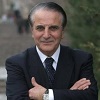Hello Visitor! Log In
Art and Science Interactions
ARTICLE | June 25, 2021 | BY Orhan Guvenen
Author(s)
Orhan Guvenen
Art and science are complementary. At the highest level, artists and scientists converge at the level of the polymath, the renaissance man, and ultimately, to da Vinci.
As mentioned in the “Retrospective and Reflections on WAAS@60” paper, which has been remarkably well prepared: “Science has improved our lives in many ways… On the other hand, it has also given us the capacity to ravage the environment on an unprecedented scale and obliterate our species altogether”. I think the real problem does not come from science or technologies. It is we—human beings, with a lack of global social responsibility, destructive decision-making approaches, who create negative impacts in our society and on our planet.
“The existing education system transmits dominantly an education of subsets and partial analysis. İt does not provide the methodology of linking subsets within an iterative approach of transdisciplinarity.”
Global social consciousness and global ethics should remain constant at the level of individuals, institutions, corporations, nation-states and the international sphere. To deal with highly complex questions of the modern world, transdisciplinarity is mandatory to understand and solve these problems.
The amount of data produced and distributed through modern communication channels is huge. A remarkable percentage of this data is not genuine. That leads to a phenomenon called “information distortion”. In preventing information distortion, the starting point, the initiator, the igniting constant should be ethics for the regulators and for information security practice.
A transdisciplinary approach to education is required to educate future generations, to deal with complex problems of the world. The existing education structure generally is based on a “department-centric system”. It transmits dominantly an education of subsets and partial analysis. İt does not provide the methodology of linking subsets within an iterative approach of transdisciplinarity.
The dominant system of the world is driven by power and the power of money. I call it “System 2”. The dominance of System 2 causes serious problems at the world level like conflicts, wars, human trafficking, degradation of use of natural resources, etc.
To prevent such problems and to solve the existing ones, there is an urgent need to convert to “System 1”, which is based on science, art, technologies, innovation, value systems, culture, ethics, and global social consciousness driven decision systems.
Dealing with complex problems, global social responsibility, accountability, human centered decision-making, endogénéisation of transformation, anticipation of systemic change are necessary conditions.
Art, science, ethics, social global responsibility, human centered decision-making will converge at the level of solutions to existing problems based on anticipatory analysis for optimal humanity.
The real revolutions are in our minds, sensitivities, and aspirations.


